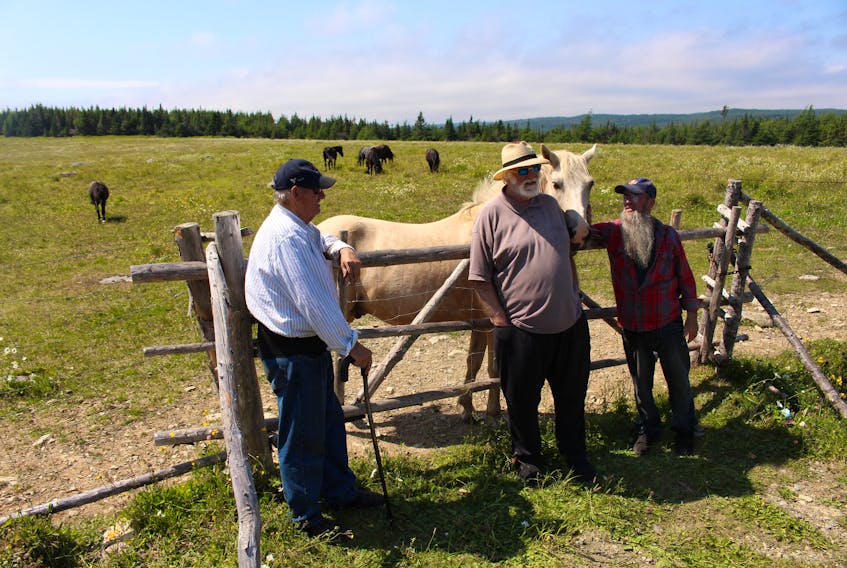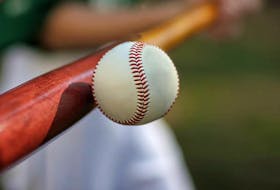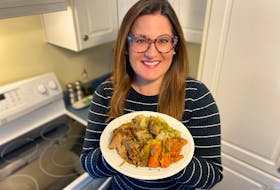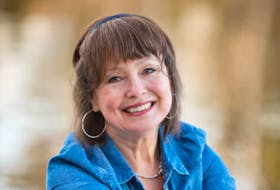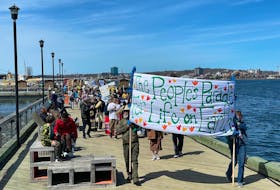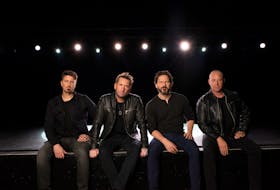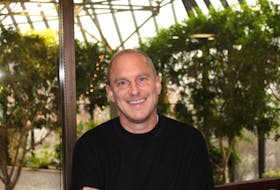The paint was still drying on his newest artwork as Clifford George walked around his studio in Victoria, Conception Bay North, eating a plate of fresh pan-fried cod surrounded by paints, brushes, books, sketches and finished paintings.
Amidst this colourful state of disarray, his passion for one subject soon becomes obvious, as he hauls out journals, recites poetry and tells stories from over the years — all about his efforts to save the Newfoundland pony.

“We did our work back when the pony was gone, almost extinct, that’s when we come on the scene — 1976,” George said.
In 1986, there were between 3,000 and 4,000 ponies, he said. By 1992, that number had dwindled to 500.
“1997 there was only approximately 60 breedable animals on the Island,” George said.

There are so many people and stories caught up in his nearly 45 years of saving horses, it’s hard to explain, George says. But there are a few constants — the meat trucks, ATVs and Roy and Art Cole, who took care of the pastures. Roy Cole died two years ago.
As the number of all-terrain vehicles and cars in the province grew, anti-roaming legislation was passed in an effort to stop collisions with horses; the animals had previously been free to roam the town. This made owning a horse more expensive.
Then came the meat trucks, which wouuld buy the horses and ship them off, mostly for food production for human consumption, George says.
“We’d go to someone that had a horse and they were putting it on the meat truck, and we’d say we’d give (them) the meat price,” he said of their efforts to rescue the breed.
George would keep them in his barn and rehabilitate them before trying to get them homes.
“Sometimes you’d have to give horses iron right away because they’re so poor — (malnourished) and everything,” he said.

Libby Carew, volunteer councillor at large with the Newfoundland Pony Society, a registered charity which aims to preserve the breed, is sitting across from George. She asks how many he would have in his barn at one time.
“Sixteen out in that barn out there one week,” he said. “Sixteen ponies, yup. I was picking them up all over the place. One woman had a milk jar (of money) up in her cupboard, Joyce Roberts. … If I told her there was two ponies down in Marystown that I needed to pick up, she’d reach up in her jar. And I was honest, and she knew it. And she knew how much money to give me. And I’d haul our trailer and I’d go down and pick up the ponies. All over Newfoundland I did that.”
The people who helped him, he often refers to simply as, “the friends of the ponies.”
George finishes his plate of cod — which he said went down faster than it came out of the water yesterday. His wife, Shirley, waves George and crew off, and he climbs into his truck on his way to the Swansea pastures.
Through multiple small towns he drives, past ocean views and tucked-away homes, before coming to an off-road near Victoria, a small town about five kilometres from Carbonear.
The pavement turns into gravel. Dust gets kicked up from his tires as the road gets more and more narrow. The tree branches begin to hang over the vehicle like a canopy.
At times, George has to slow to a crawl to account for large dips in the road. But the view soon changes to an expansive field filled with yellow buttercups, white daisies and purple clover, as 35 horses roam, graze and seek shade in the nearby woods.

Sitting in the pan of a truck overlooking the scene are Art Cole and Fred Parsons, the two men who take care of the Swansea pastures, which Cole says is 93 hectares of Crown land.
Cole and Parsons have no special expertise and make no money for their work. They do it simply because they love the horses.
“Pay 100 dollars and leave them here for the summer,” Parsons says.

That money goes for fence upkeep and to spread manure at the beginning of the year to grow hay.
“It means a good deal to (the pony owners),” Cole said. “Like they say, we got one of the best pastures here in Conception Bay.”
There are two others pastures in the area, but theirs has the most horses, which come from all over Newfoundland and are owned by different people, they say.
“We got a lot,” Cole says.
“We got 35 here,” Parsons says.
“This is the most ponies in one place, in Newfoundland,” George says.
George says there’s no government funding for the type of work these men do.
Cole doesn’t think that’s fair, given their significance to the province.
“Years ago, Newfoundland depended on the pony to haul their wood and bring the doctors in and everything else,” Cole said.
Parsons has trouble with his feet and can no longer do the type of work he once did.
Cole is still spry for a 75-year-old, but where once he would have jumped over fences, he now climbs.
They fear the knowledge they’ve inherited about caring for the ponies will soon disappear.
“The old ways is dying fast,” Cole says.
The two men will drive up to the pastures, sometimes three times a day.
“Oh man, it’s one of the best places around,” he said. “Like missus (volunteer with the Newfoundland Pony Society, Kelly Power-Kean) said there, it’s heaven.”
[email protected]
Twitter: @AndrewLWaterman


